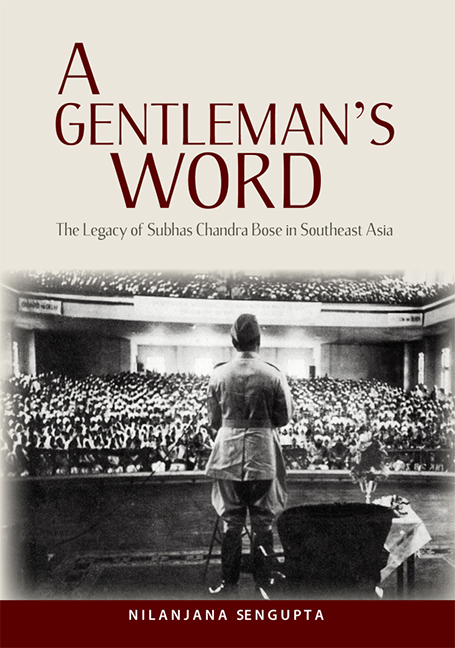Book contents
- Frontmatter
- Dedication
- Contents
- Foreword by S. R. Nathan
- Message by K. Kesavapany
- Message by Joyce C. Lebra
- Preface
- Acknowledgements
- 1 A Journey: A Dream
- 2 An Outsider in the Crescent and a Trial for Treason
- 3 End of a War, Beginning of Others
- 4 We are the Multitudes
- 5 “They Have Done Enough at Home”: Escape from the Shadows
- Bibliography
- Index
- About the Author
- Plate Section
2 - An Outsider in the Crescent and a Trial for Treason
Published online by Cambridge University Press: 21 October 2015
- Frontmatter
- Dedication
- Contents
- Foreword by S. R. Nathan
- Message by K. Kesavapany
- Message by Joyce C. Lebra
- Preface
- Acknowledgements
- 1 A Journey: A Dream
- 2 An Outsider in the Crescent and a Trial for Treason
- 3 End of a War, Beginning of Others
- 4 We are the Multitudes
- 5 “They Have Done Enough at Home”: Escape from the Shadows
- Bibliography
- Index
- About the Author
- Plate Section
Summary
“The air broke into a mist with bells,
The old walls rocked with the crowd and cries.
Had I said, “Good folk, mere noise repels —
But give me your sun from yonder skies!”
They had answered, “And afterward, what else?”
— The Patriot, Robert BrowningSUBHAS CHANDRA BOSE IN SOUTHEAST ASIA AND THE CONTEMPORARY SCENARIO
Introduction: The Southeast Asian Crescent
As Subhas Chandra Bose made his way through treacherous oceans towards the Southeast Asian crescent, large tracts of this great connected landmass were under the imperial regime of Japan. From Bengal at the Western tip, down through Burma, Thailand and stretching to Malaya (Malaysia and Singapore) on the East, the crescent at one point had formed the commercial heart of the British Asian Empire and would soon be the heartland of INA (Indian National Army) operations. To the common Indian labourer working at the plantations of Malaya or the dockyards of Burma, Subhas Chandra Bose was a comparatively unknown name. Though hailed as something akin to a legend in the nationalist circles of Rashbehari Bose and Mohan Singh, he would have to start afresh and reach out as a populist leader to the large community of Indians present here.
Unlike other parts of Asia, the Southeast had always lacked a single, dominant ethnic group and been diversified in terms of language, culture, religion and even colonial regimes. So while Laos, Cambodia and Vietnam were clubbed together to form French Indo-China, Indonesia had been rechristened the Dutch East Indies and the Philippines formed an isolated little pocket of first Spanish and then American dominion. Thailand, never under Western colonial rule, had however for centuries been economically ruled by British financiers. Earlier, in many senses, this area of Asia had been a “spillover” from the two, more coherent neighbouring regions of India and China.1 Whereas portions of the West and central, maritime Southeast Asia came under “Indian-Sanskritic-Hindu-Buddhist” influences; the cultural base of Vietnam was Chinese with the Chinese form of Buddhism practised here. But the organic unity of this region in terms of spiritual beliefs and cultural practices was torn apart by the early twentieth century as rival European powers began to carve out their own colonial empires.
- Type
- Chapter
- Information
- A Gentleman's WordThe Legacy of Subhas Chandra Bose in Southeast Asia, pp. 38 - 92Publisher: ISEAS–Yusof Ishak InstitutePrint publication year: 2012



